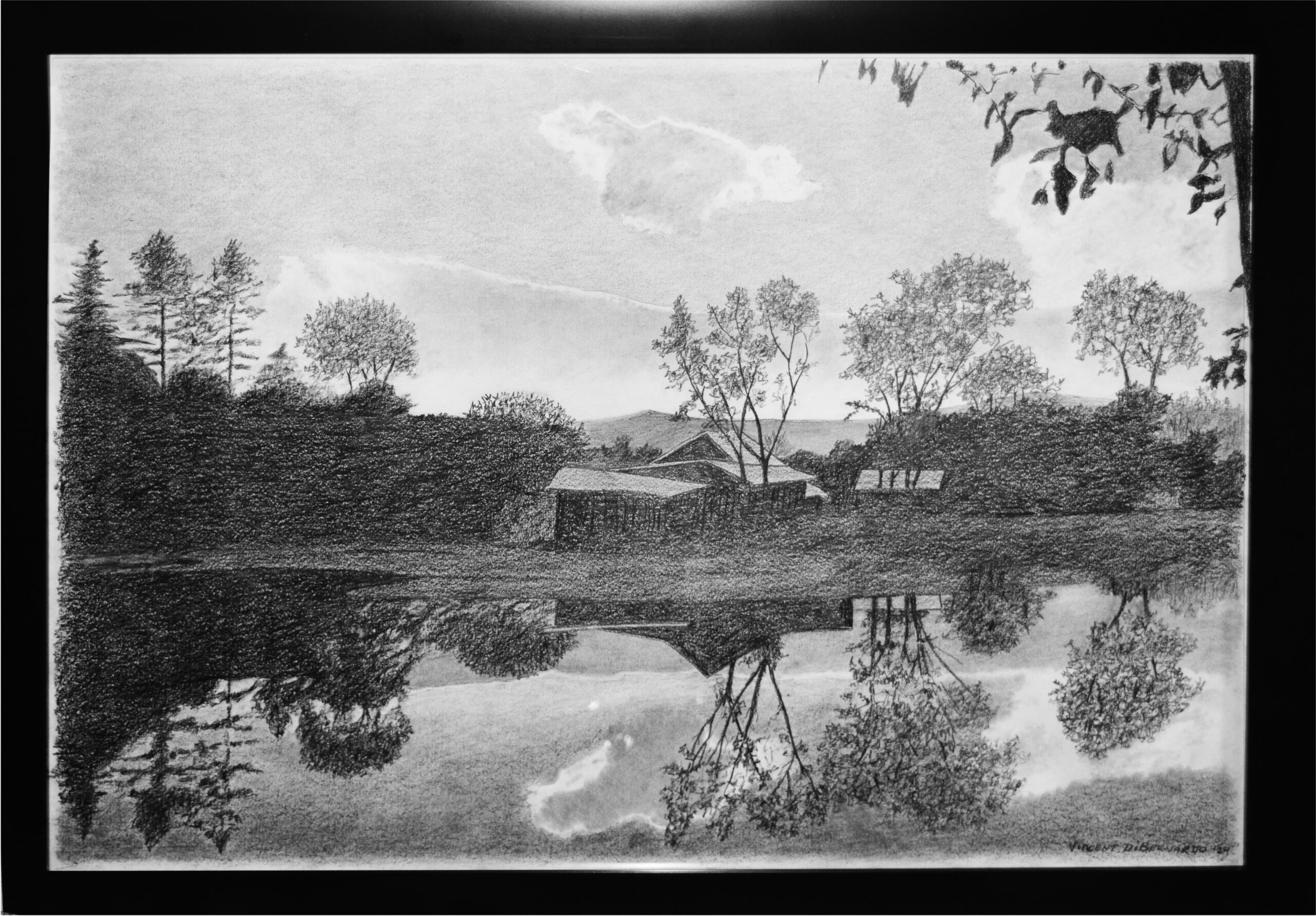
SAXTONS RIVER, Vt. – Main Street Arts Gallery in Saxtons River, Vt., is pleased to present “Pencil Me In,” a selection of graphite drawings by Vincent DiBernardo, July 6 – Sept. 1. The artist’s reception is Saturday, July 6, 3-5 p.m., in the gallery at 35 Main Street, Saxtons River, Vt., with light refreshments provided by the artist’s daughter Sarah DiBernardo, who creates “Smokin’ Bowls” at her site on Route 103 in Rockingham.
DiBernardo’s drawings feature various familiar scenes in the Rockingham, Vt., area, some captured en plein air by DiBernardo, and some inspired by old photographs of antique buildings, trains, covered bridges, and life in southern Vermont. Graphite is a black medium, and DiBernardo is skilled at creating depth and drama with just his white surface and his pencils. Viewers will be tempted to name the local rivers, meadows, buildings, and bridges featured in his work.
DiBernardo’s artist statement says, “I started drawing in the early 80s after graduating from The University of Pennsylvania School of Veterinary Medicine and starting my own practice. I initially drew for enjoyment and relaxation, but discovered I had some talent for drawing. However, having no formal training, I took a few basic drawing lessons from an artist friend and client. I practiced and practiced several variations of still lifes. I started a picture of a local sugarhouse and liked my progress. But then life and career happened! I didn’t pick up a pencil to draw for thirty plus years. After I sold my veterinary practice, I had more free time and started drawing again. After thirty years I finished that sugarhouse and, liking the result, started drawing in earnest. I mostly draw landscapes, waterscapes, and local subjects. I draw mostly from pictures I have taken, other friends have taken, or old photographs I may come across that appeal to me. I only draw in graphite. I equate graphite art to black and white photography which, like black and white photography, is a study of darkness versus light. The compositions, without color, allow the viewer to concentrate on contrast, texture, and tones present in the scene.”